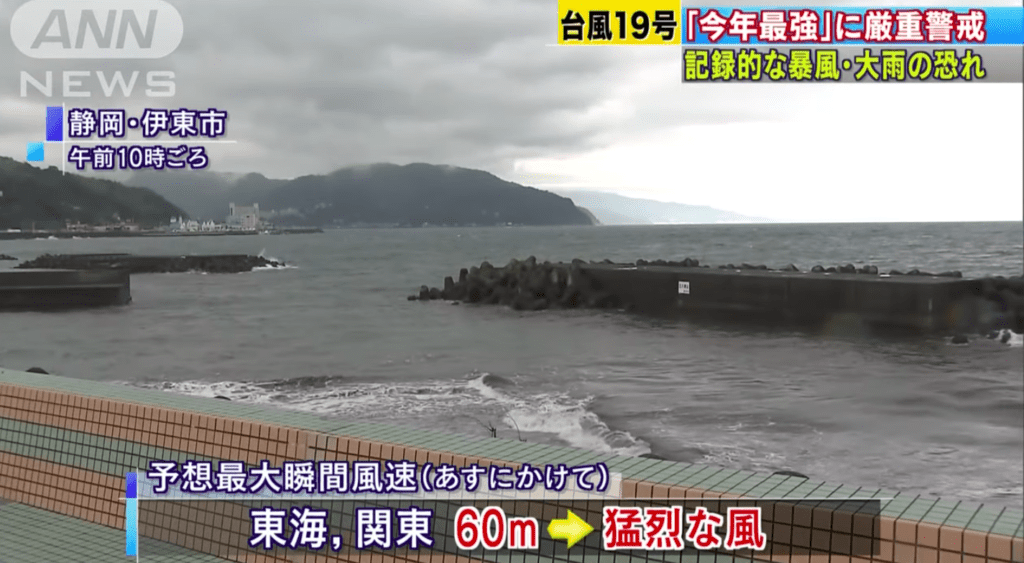Threatening to disrupt activity with the heaviest rain and winds in 60 years, the Hagibis Typhoon is approaching Japan, due to make landfall on the main island of Honshu on Saturday – a month after one of the strongest typhoons to hit Japan in recent years destroyed or damaged 30,000 houses.

The Japanese prime minister, Shinzo Abe, ordered his cabinet ministers to do their utmost to secure people’s safety. The storm could be the strongest to hit Tokyo since 1958. People should also prepare for high waves and storm surges, the Japan Meteorological Agency said.
East Japan Railway announced that it will suspend many trains runs Saturday, while Central Japan Railway said it will cancel all shinkansen services between Tokyo and Nagoya and West Japan Railway plans suspensions between Shin-Osaka and Okayama stations.
Supermarkets are going the extra mile on safety precautions. Major chain Ito Yokado said it will close 124 outlets in Tokyo, Kanagawa, Chiba, Saitama, Ibaraki, Gifu, Shizuoka and Aichi prefectures throughout Saturday. Department store Isetan Mitsukoshi Holdings announced the same day that its Shinjuku, Ginza, and Ebisu stores in Tokyo will close on Saturday as well.
Theme parks are no exception either. Tokyo Disneyland and Tokyo DisneySea will close on Saturday for the first time since the Great East Japan Earthquake struck in 2011, operator Oriental Land said. Universal Studios Japan said its Osaka facility will do the same.
Shigeo Kannaka, a director of Japan Bosai (Disaster Prevention) Society, urged caution. Asked what measures households can take to prepare for such contingencies, Kannaka recommended filling bathtubs, kettles, and buckets with water that can later be used to flush toilets and fulfill other domestic purposes.
Flashlights, lanterns and portable radios will also come in handy in the event of a power failure, he said. Other safety precautions include taping windows in all directions to prevent them from fragmenting when they break, stocking up on enough potable water for three days, and topping up the gas tanks of cars and other vehicles.
“To protect your own and your loved ones’ lives, please evacuate swiftly before winds and rain become strong and it grows dark and ensures your safety if evacuation advisories are issued by local bodies,” Yasushi Kajihara, director of the Forecast Division, told a news conference.






